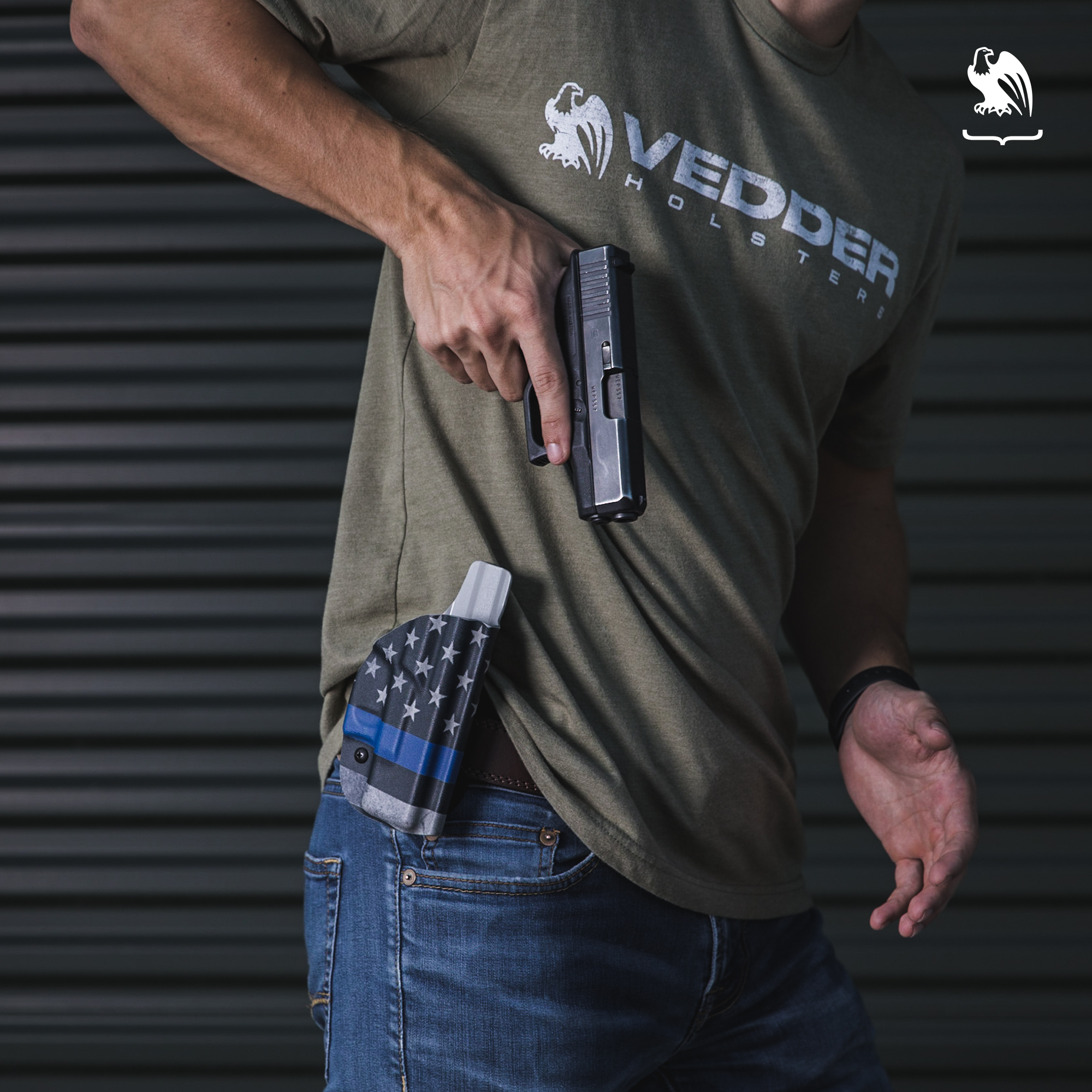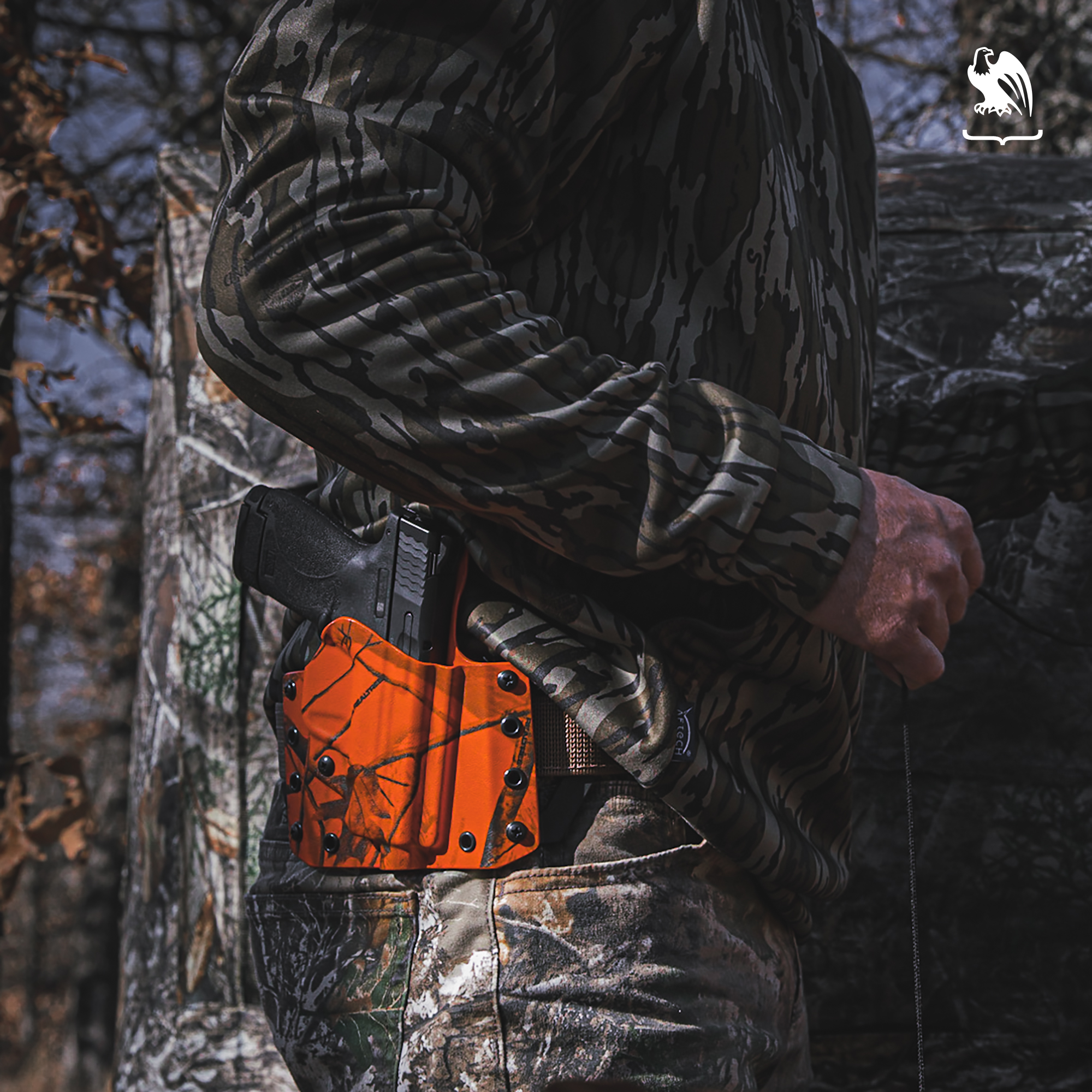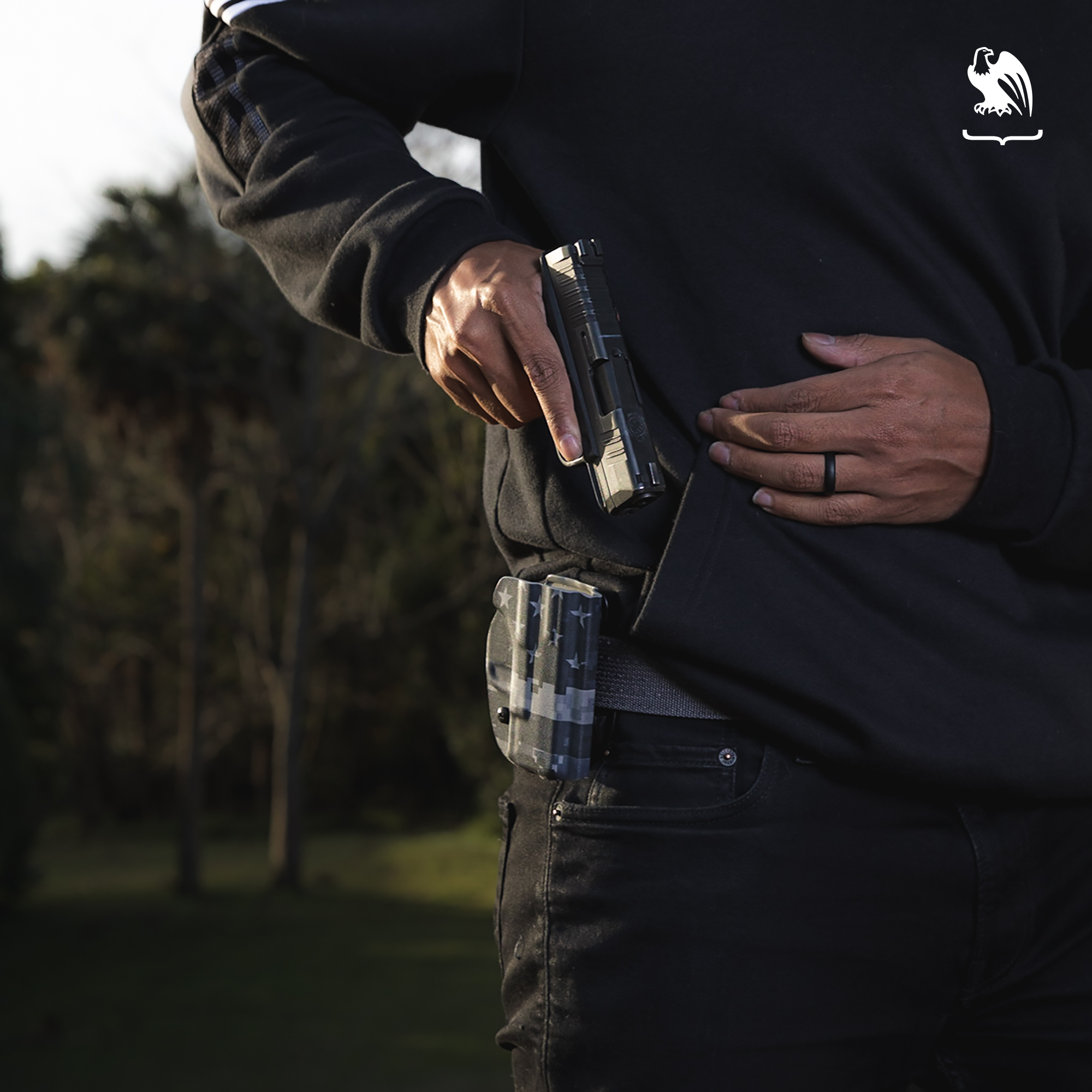What Is A Press Check?

If you’ve been shooting for some time, you’ve probably heard the term “press check” thrown around in the gun community. But you may still be wondering: what is a press check, and should I be doing it?
A press check is the act of pulling the slide of your gun back so you can see if there is a round in the chamber. Of course, like many subjects in the gun world, there is a bit of controversy as to whether the move is actually a safe and useful practice.
What Is A Press Check?
Simply put, a press check is a gun handling technique in which you push the slide of your gun back to see if there is a round in the chamber. A proper pistol press check is performed when you pull the slide of your gun back just far enough to see the brass but not far enough to eject it.
A press check, also known as a weapons check, brass check, or chamber check, can be performed on a pistol, rifle, or shotgun, though it is most often associated with handguns. Most people who perform press checks only do so on their self-defense weapons since most other guns, like hunting rifles, should be kept unloaded and in a safe place when not in use so you always know whether they’re loaded or not.
While a weapons check can be used as a tool to verify whether a round has successfully chambered, it’s important to note that if you are checking to make sure the gun is unloaded so you can clean it or for any other reason, don’t rely on a quick brass check. Always fully rack the slide to ensure the chamber is clear!
How To Do A Press Check

While the concept of a chamber check seems pretty straightforward, some technique is involved.
To perform a pistol press check, grip the handle of your gun with your dominant hand. As always, make sure to keep your finger safely outside the trigger guard and your firearm pointed in a safe direction throughout the process.
Once you have a good grip on your pistol, use your other hand to grab the slide. It doesn’t matter if you grip the front or rear cocking serrations or if you hold the front of the slide, just be sure to keep your support hand away from the muzzle of the gun during the check.
Next, firmly pull or push the slide back just far enough to see the cartridge, or lack thereof, in the chamber.
Once you have verified the gun is loaded, let go of the slide and allow it to snap back into place on its own. It’s important to make sure that the slide returns to its fully forward position, also known as “being in battery,” following a pistol press check.
While you’re at it, make it a habit to also eject your magazine and make sure it’s fully loaded and functioning properly. Inspect the bullet at the top to ensure it’s properly seated.
When to Press Check a Firearm

The primary time you may want to brass check your gun is right after you rack the slide to ensure that your round was successfully chambered. Some people also check their carry gun before they holster it each day.
Experts who are for press checks recommend doing them any time you are unsure of your firearm’s status. Whether you’ve just been handed a gun, someone else has handled your weapon, or if for any other reason you are not 110% sure that you have a round in the chamber, it’s important to find out.
Beth Alcazar with the U.S. Concealed Carry Association said in a video that she recommends performing a weapons check to verify the status of your weapon any time you’re not sure of its status.
“It’s just a really good habit to get into,” she said. “We know that we don't really trust the manual safety or the mechanical movements of the gun … more than our own judgment. So even though you might have a loaded chamber indicator, like on the XD firearm, you’re going to want to check and double-check and make sure you’ve seen it with your own eyes.”
However, there are plenty of shooting experts who say you should never chamber check your weapon at all. Jeff L. Gonzales, tactical trainer and president of Trident Concepts, LLC, wrote in a The Truth About Guns article that you should always be aware of your firearm’s status. He sees persistent brass checking as a sign of a lack of confidence, which can be deadly in a self-defense situation.
“Armed self-defense is not a game. It’s combat. Why wouldn’t you keep your defensive firearm in the highest possible state of readiness?” he wrote. “If you feel the need to press check your firearm, you need to ask yourself why. And do whatever it takes to be confident in yourself and your gun’s condition. So that you’re as ready as you can be to fight. And win.”
Is Press Checking Safe?
There has been a lot of heated debate in the gun community as to whether press checking is a safe practice or not.
While critics say the risk of negligent discharge from over-handling a loaded weapon outweighs the benefits of a weapons check, proponents argue that not knowing the status of your gun is even more dangerous.
Negligent discharge is not the only concern people have regarding chamber checks. Several mechanical errors can be caused if you do it incorrectly or too often.
First, when you press check the same cartridge repeatedly, it can actually cause the bullet to slowly sink into its case. This can obviously be very bad, causing chambering issues and potential mechanical errors if you need to fire.
Battery issues can also be a concern with weapons checks. Sometimes a hasty weapons check can lead to a slide or bolt not properly entering battery, which can cause the weapon to fail when you fire it. Luckily, this can be avoided by taking a quick look to ensure the bolt or slide of your gun is fully forward following a pistol press check by tapping the slide back in and making sure it’s level.
Another mechanical issue that can occur is a double feed. When you perform brass checks in a hurry, sometimes the extractor will start to eject the round and cause a double feed, in which two rounds are fed into the chamber at the same time.
J Helmsing, YouTuber and full-time law enforcement officer, said in a video that he avoids chamber checks because of the potential for mechanical malfunction and related safety issues.
“I don’t like to do press checks for a couple of reasons. … You might induce a double feed or some other malfunction. It’s only going to slow you down and make you kind of redo the whole process again,” he said. “I also don’t really like to handle loaded weapons in an administrative function if I can keep from it. … I’ve found that fiddling around with it, you know, manipulating all that kind of stuff, with it loaded and with one in there just getting ready to go off probably for me is just not a risk that I really want to take too often.”
On the other hand, some shooting experts, like Alcazar, believe that chamber checks can actually help prevent shooting malfunctions.
“By doing a press check, I can visibly see … that the gun is loaded and it’s ready to go because there is a round in the chamber. I don’t have a double feed, I don’t have some kind of error waiting to happen, we are good, ready to go, the gun’s in battery, and I’m ready to shoot,” she said in a USCCA video. “We always tell people to know the status of their gun. If the status of your gun should be that it’s fully loaded with a round in the chamber, there’s nothing wrong with taking that extra peek just to make sure.”
Should I Press Check My Gun?
There are plenty of experts in the gun world who recommend chamber checks as a responsible weapon handling technique. On the other hand, many other experts say the move is unnecessary and even dangerous.
Most experts do agree on two things:
- You should always know the status of your firearm.
- You should avoid unnecessary handling of a loaded weapon.
So, where does that leave us? Even the majority of gun experts who are proponents of press checking don’t recommend doing it unnecessarily. If you can successfully verify the status of your gun without the use of a brass check, that’s probably your best bet.
Pistol combative instructor Mickey Schuch said in a CarryTrainer video that while he does chamber check his weapons from time to time, it’s not something that should be done excessively.
“Press checking is done very much on the same terms as pressing your trigger; you do it because you need to,” he said. “Either you are completing a drill, firing a group, or needing to shoot something that needs a hole in it. You don’t just randomly press check, just like you don’t randomly pull the trigger. It is just you doing whatever you need to do to know the condition of the weapon and keep it running.”
At the end of the day, whether or not you choose to chamber check your gun comes down to personal preference and what you use your firearms for. Before making a decision about where you stand on the subject, it’s a good idea to weigh all sides of the argument.
Alternatives To A Press Check

Even if you decide that press checks are not for you, it’s still important to know the status of your firearm. Luckily, there are other methods of determining whether there’s a round in the chamber that don’t involve over-handling a loaded gun.
Loaded chamber indicators are a small exposed tab that sticks up if there is a round in the chamber. More and more firearms are being built with this feature, though many guns, especially semi-automatics, are not.
While loaded chamber indicators are a great feature, especially since you can feel the indicator tab in the dark, it’s not foolproof. If your gun is dirty, there’s a chance that the indicator will get stuck in the “loaded” position whether there’s a round in the chamber or not. So, while the loaded chamber indicator works great most of the time, if your gun is dirty, you may want to double-check somehow.
Alternatively, some guns have a chamber window. A chamber window is basically a small hole in the top of the chamber that lets you look inside and see brass. The only downside to the chamber window is they’re difficult to use in low-light situations.
Another alternative is a magazine check. Most modern magazines are built with small holes on the back or side so you can see how many bullets are in them. When you chamber a round, an easy way to make sure it was successful is to pop out your magazine and see if one is missing.
The magazine check is a relatively foolproof, safe, and easy way to know if your chamber was successful, though it’s not always a good indicator if there’s a chance someone else has handled your weapon.
Conclusion
Experts may disagree on whether a weapons check is the way to go, but they do agree on one thing: knowing whether you have a round in the chamber is an integral part of responsible gun ownership. Now that you know how to do a press check and understand the pros and cons of the technique, it’s up to you to weigh your options and decide if it makes sense for you.
If you are looking for belts or holsters, check out some of our Vedder Holsters products here. Like everything we sell, our holsters and gun belts are covered by a Lifetime Warranty and a 30-day money-back guarantee.
Looking for items beyond holsters and belts? Check out our Resources Page for popular product links like lights, laser, first aid, maintenance, and more.

